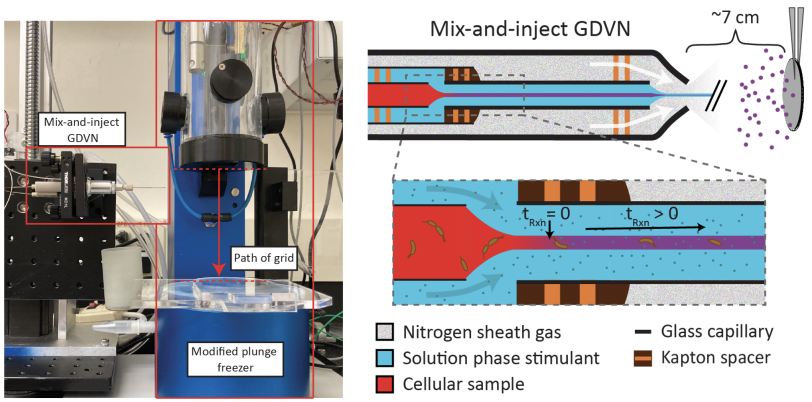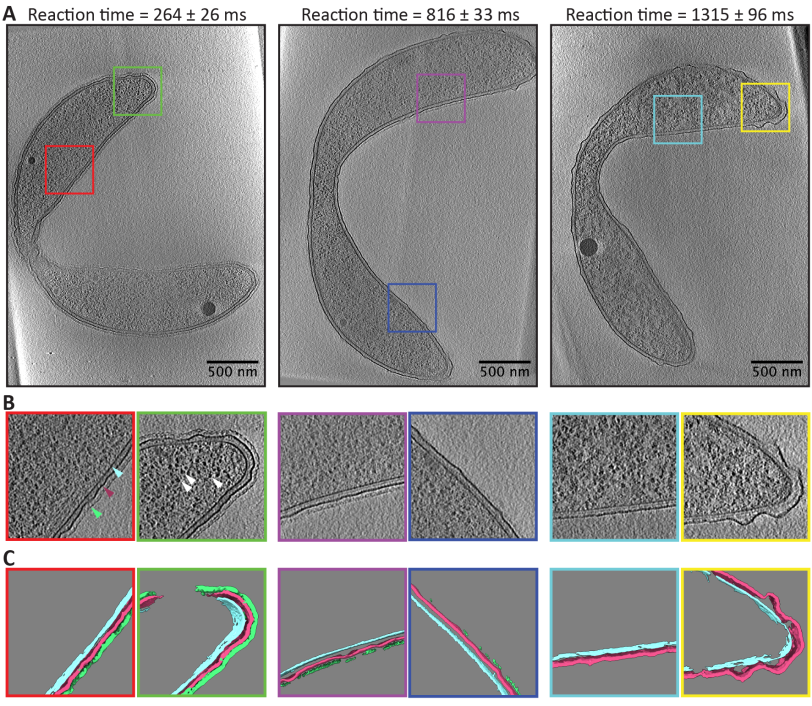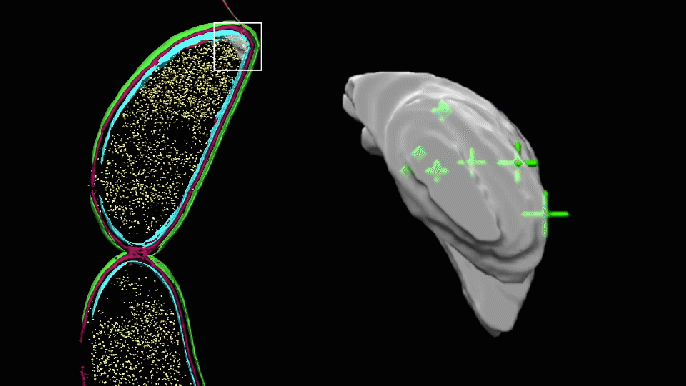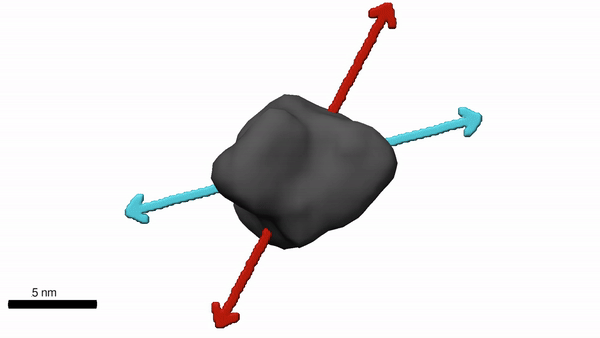Time-resolved freezing
Putting cellular tomography in temporal context
It has long been recognized that the rapid freezing process that prepares samples for single-particle CryoEM lends itself well to time-resolved studies. Early work by Nigel Unwin's lab explored mixing purified proteins at short controlled times prior to freezing. This work is ongoing today in numerous labs. Here, we extend the study of in vitro systems to in situ systems by pairing a microfluidic device capable of mixing and aerosolizing cells with a plunge freezer. The device, shown to the right, allows for the stimulation of cellular samples at controlled times prior to freezing.


The data to the left is generated from freezing the fresh water bacterium, C. crescentus, in a time-resolved fashion. The bacteria were subjected to a low pH jump prior to freezing. The times indicated are how long the various bacteria were in low pH conditions prior to freezing. There are several clear structural changes that can be captured in this proof-of-principle demonstration of the approach. First, the surface layer of proteins, shown in green in the segmentations, falls off in large sheets. Second, the outer membrane, segmented in maroon, ruffles. Lastly, there is an apparent change to the cytosol, which is visible as an enhanced contrast for the ribosomes. While the response of bacteria to low pH buffer is not the most interesting system, this does prove the approach is possible and opens the door for many future investigations of millisecond dynamics with nanometer scale resolution in situ.



